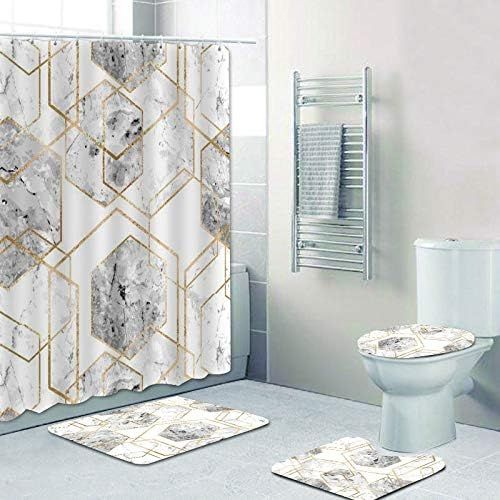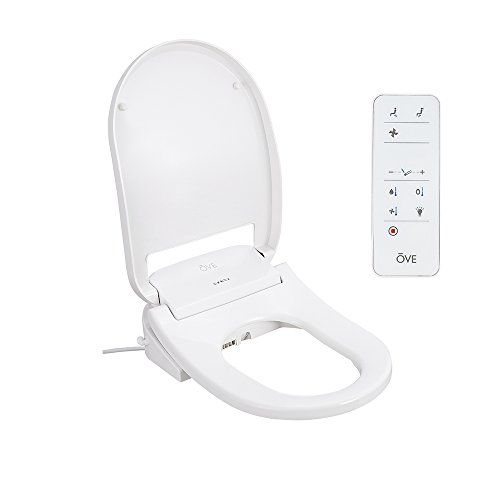Can Bathroom Lights And Outlets Be On Same Circuit
Are you renovating your bathroom and wondering if you can have the lights and outlets on the same circuit? Well, you’ve come to the right place for answers. Understanding the electrical codes for bathrooms is crucial when it comes to ensuring the safety and functionality of your electrical system.
In this article, we will explore the possibility of combining lighting and outlets on the same circuit, as well as the considerations and precautions that need to be taken into account. While it may seem convenient to have everything on one circuit, it’s important to hire a professional electrician to ensure that the wiring is done correctly and in compliance with the codes.
We will also discuss alternative options to combining circuits and provide valuable safety tips to keep in mind. So, let’s dive in and discover the best approach for your bathroom electrical setup.
Key Takeaways
- Separate circuits prevent overloading and reduce hazards
- GFCI outlets quickly shut off power in case of faults
- Proper wiring prevents shocks, fires, and hazards
- Regular inspections prevent major problems
Understanding Electrical Codes for Bathrooms
So, you’re probably wondering if it’s okay to have your bathroom lights and outlets on the same circuit, right? Well, according to the latest electrical code updates, it’s generally acceptable to have the lights and outlets on the same circuit in a bathroom.
However, there are some important considerations to keep in mind. First, you need to ensure that the circuit can handle the electrical load of both the lights and the outlets. It’s also important to choose bathroom lighting options that are suitable for wet and damp environments, such as recessed lighting or fixtures with appropriate IP (Ingress Protection) ratings.
Additionally, it’s crucial to have Ground Fault Circuit Interrupters (GFCIs) installed for all outlets in the bathroom to ensure safety.
Remember, it’s always best to consult with a licensed electrician to ensure compliance with local electrical codes and to ensure your bathroom is properly wired for safety.
Separating Lighting and Outlets
Additionally, you have the option to separate the electrical connections for the lighting and power sources in your bathroom. This can be done in accordance with electrical codes to ensure safety and compliance.
Separating lighting and outlets is a common practice and provides several benefits:
- Enhanced safety: By separating the circuits, you reduce the risk of overloading and potential electrical hazards.
- Improved functionality: Having separate circuits allows you to control the lighting and power sources independently, giving you more flexibility in how you use your bathroom.
- Easy troubleshooting: If there is an issue with one circuit, separating the lighting and outlets makes it easier to identify and fix the problem.
- Compliance with electrical codes: Separating lighting and outlets is often required by electrical codes to meet safety standards and prevent potential accidents.
By understanding and following the electrical codes, you can ensure a well-functioning and safe bathroom electrical system.
Considerations for Combined Circuits
When considering combined circuits for bathroom lighting and outlets, there are two key points to keep in mind.
First, all bathroom outlets must be protected by ground fault circuit interrupters (GFCIs) to ensure safety. This is a requirement outlined by the National Electrical Code (NEC).
Second, load calculations need to be performed to determine the maximum electrical load that can be safely handled by the combined circuit. This is important to prevent overloading and potential fire hazards.
GFCI Requirements for Bathroom Outlets
Did you know that in order to meet GFCI requirements for bathroom outlets, the lights and outlets can’t be on the same circuit? This is because GFCI (Ground Fault Circuit Interrupter) protection is crucial for electrical safety in bathrooms. GFCIs detect imbalances in the electrical current and quickly shut off power to prevent electric shock. According to electrical safety regulations, all outlets within six feet of a sink must be protected by a GFCI. This includes outlets near the bathroom vanity, bathtub, and shower.
By having separate circuits for the lights and outlets, the GFCI protection is not compromised. This ensures that even if a fault occurs in one circuit, the other circuit remains unaffected, providing continuous electrical safety in the bathroom.
Remember, it’s important to consult a licensed electrician to ensure proper installation and compliance with local electrical codes.
Load Calculation for Combined Circuits
To ensure the electrical load is properly distributed throughout your home, you should calculate the combined load of all the devices connected to a circuit. This is important because circuit limitations need to be considered for efficient power distribution.
When it comes to combining bathroom lights and outlets on the same circuit, it’s crucial to calculate the load accurately. The National Electrical Code (NEC) provides guidelines for load calculations to prevent overloading circuits and ensure safety.
These calculations take into account the wattage of the lights and the power requirements of the outlets. By determining the total load, you can assess whether the circuit can handle the combined electrical demand. This information is essential for proper circuit design and to prevent any potential electrical hazards.
Hiring a Professional Electrician
Hiring a professional electrician is crucial to ensure the safety and proper functioning of the bathroom lights and outlets on the same circuit. When it comes to the cost of hiring an electrician, it may vary depending on factors such as the complexity of the job, the location, and the electrician’s experience. However, it’s important to remember that hiring a qualified electrician is worth the investment to avoid potential hazards and ensure compliance with electrical codes.
Here are four reasons why hiring a professional electrician is essential:
- Expertise: A professional electrician has the necessary knowledge and skills to handle electrical work safely and efficiently.
- Safety: They’re trained to identify and address any electrical hazards, minimizing the risk of accidents or electrical fires.
- Code Compliance: Electricians are familiar with local electrical codes and regulations, ensuring that the installation meets the required standards.
- Warranty: Hiring a professional electrician often includes a warranty on their work, providing peace of mind and protection against any unforeseen issues.
By hiring a professional electrician, you can ensure a smooth and reliable electrical system for your bathroom lights and outlets.
Alternatives to Combined Circuits
One option for organizing your electrical system in the bathroom is to consider alternatives to combining circuits. This can help ensure electrical safety and provide flexibility in your wiring options.
By keeping the bathroom lights and outlets on separate circuits, you can minimize the risk of overloading the circuit and reduce the chances of electrical accidents. This approach allows you to have dedicated circuits for each function, providing a more efficient and reliable electrical system. Additionally, it enables you to easily troubleshoot and isolate any issues that may arise.
When considering alternatives to combined circuits, consult with a professional electrician to assess your specific needs and determine the best wiring options for your bathroom.
Safety Precautions and Tips
Make sure you take the necessary safety precautions and follow these tips to ensure a secure and worry-free electrical system in your bathroom.
-
Ensure proper grounding: Make sure all outlets are properly grounded to prevent electrical shocks. Proper grounding of electrical outlets is essential for safety.
-
Use GFCI outlets: Install GFCI outlets in your bathroom to protect against electrical shocks. GFCI outlets are designed to quickly shut off power in the event of a ground fault.
-
Keep outlets away from water sources: Avoid installing outlets near sinks, showers, or bathtubs to prevent water from coming into contact with electrical outlets.
-
Hire a professional: It’s always best to hire a licensed electrician when it comes to electrical work. They have the knowledge and expertise to ensure proper installation and electrical safety.
By following these tips and taking the necessary precautions, you can ensure a safe and worry-free electrical system in your bathroom.
Common Mistakes to Avoid
To ensure a worry-free electrical system in your bathroom, it’s crucial to steer clear of common mistakes that could lead to potential hazards and inconvenience.
One of the most important mistakes to avoid is overloading the circuit. It’s essential to understand the electrical capacity of your bathroom and not exceed it by plugging in too many devices.
Another mistake to avoid is using improper wiring techniques. It’s important to hire a professional electrician to ensure that the wiring in your bathroom is done correctly and up to code.
Additionally, neglecting to install ground fault circuit interrupters (GFCIs) is a mistake that can have serious consequences. GFCIs are designed to quickly shut off power in the event of a ground fault, preventing electrical shocks.
Finally, failing to regularly inspect and maintain your bathroom’s electrical system can lead to safety hazards. It’s important to check for any signs of wear or damage and address them promptly.
By avoiding these common mistakes and following safety precautions, you can ensure a safe and functional electrical system in your bathroom.
Understanding Your Electrical System
Take a moment to familiarize yourself with the electrical system in your bathroom, ensuring a safe and efficient environment. Understanding your electrical system is crucial for proper installation and troubleshooting electrical issues. To help you visualize the components of your bathroom electrical system, imagine a 2 column and 5 row table:
| Circuit | Description |
|---|---|
| Lighting | Controls the bathroom lights, including the main overhead light and vanity lights. |
| Outlets | Powers the electrical outlets in the bathroom for devices like hairdryers and electric toothbrushes. |
| GFCI | Stands for Ground Fault Circuit Interrupter and protects against electrical shocks, typically installed near water sources. |
| Exhaust Fan | Removes moisture and odors from the bathroom, preventing mold and maintaining air quality. |
| Switches | Controls the various lights and fans in the bathroom, allowing you to turn them on and off. |
By familiarizing yourself with these components, you can better understand how your electrical system functions and troubleshoot any issues that may arise. Remember to always exercise caution and consult a professional electrician when needed.
Conclusion and Final Considerations
Understanding your electrical system in the bathroom is crucial for ensuring a safe and efficient environment, and it’s important to consider a few final considerations before you go.
Here are some final recommendations and potential drawbacks to keep in mind:
-
Separate circuits: It is always recommended to have separate circuits for bathroom lights and outlets. This helps prevent overloading and reduces the risk of electrical hazards.
-
GFCI protection: Installing Ground Fault Circuit Interrupter (GFCI) outlets in your bathroom is a must. These outlets provide added protection by quickly shutting off the power if they detect a fault or short circuit.
-
Proper wiring: Make sure your bathroom electrical system is properly wired by a licensed electrician. Faulty wiring can lead to electrical shocks, fires, or other hazards.
-
Regular inspections: It is advisable to have your bathroom electrical system inspected regularly to identify any potential issues or hazards before they become major problems.
By following these final recommendations and being aware of potential drawbacks, you can ensure a safe and efficient electrical system in your bathroom.
Frequently Asked Questions
How much does it typically cost to hire a professional electrician for bathroom electrical work?
The cost of hiring a professional electrician for bathroom electrical work can vary based on factors such as the complexity of the job, the location, and the electrician’s experience. A cost breakdown can help determine the specific expenses involved.
Can I install a combined circuit in my bathroom without violating any electrical codes?
To ensure compliance with electrical codes, it is recommended to hire a professional electrician for bathroom electrical work. Attempting DIY work can be risky and may result in safety hazards or costly repairs.
What are the most common mistakes homeowners make when attempting DIY bathroom electrical work?
When attempting DIY bathroom electrical work, common mistakes include improper wiring, inadequate grounding, using incorrect wire gauge, and not following electrical codes. It is crucial to educate yourself, use appropriate equipment, and consult a professional if needed.
Are there any alternatives to using a combined circuit for bathroom lighting and outlets?
There are alternatives to using a combined circuit for bathroom lighting and outlets. One option is to have separate circuits for each. The pros of separate circuits include increased safety and flexibility, while the cons include higher installation costs and potential for overload.
What are some important safety precautions and tips to keep in mind when working with bathroom electrical systems?
Important safety precautions and tips when working with bathroom electrical systems include turning off the power, using GFCI outlets, avoiding water contact, properly grounding and bonding, and hiring a licensed electrician for complex tasks.
Conclusion
In conclusion, it’s crucial to understand and adhere to electrical codes when it comes to bathroom lighting and outlets.
While it’s technically possible to have bathroom lights and outlets on the same circuit, it’s generally recommended to separate them for safety reasons.
Hiring a professional electrician is highly advised to ensure proper installation and compliance with regulations.
If separating circuits isn’t feasible, alternative options such as ground fault circuit interrupters (GFCIs) can be considered.
Remember to prioritize safety and avoid common mistakes when dealing with your electrical system.












.jpg)








